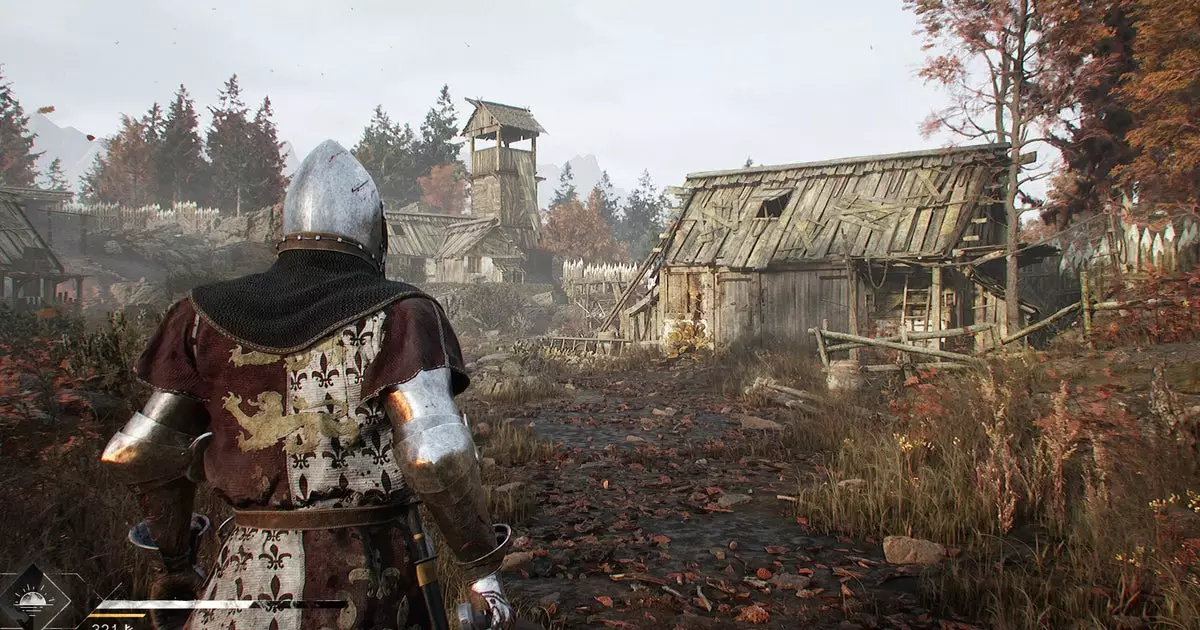For gamers who are drawn to the shadows of horror and action, Blight: Survival shines as a promising glimmer amidst an otherwise murky landscape. Developed by the indie studio Haenir, this putrid action-horror game invites players to traverse the treacherous terrain between two warring factions—a setting rife with despair, decay, and the shambling remnants of the undead. What captivates me about Blight isn’t just its premise or the lore it weaves but the emotional textures it strives to articulate amid the chaos.
Understanding the origins of this project, initially nurtured by just two developers, prompts a marvel at the ambition it embodies. While I initially reached out to the developers seeking insights, their silence spoke volumes. Developing a game of this magnitude is an undertaking fraught with challenges, and it feels refreshing to see a small team carve out space in a landscape dominated by larger studios. However, recent updates hint at a larger evolution. The announcement of new biomes and enemies, coupled with the initiation of a closed playtesting phase, has propelled my interest to new heights.
The Dreadful World of Blight
At its core, Blight: Survival compels players to navigate a grim world teetering on the brink of annihilation. The narrative kicks off amidst a bizarre conflict that has transformed villagers into grotesque, spore-infested beings, while enemy soldiers zealously plunder the remnants of warfare. This backstory invites players into their roles as grave robbers—an intriguing perspective indeed, ditching the conventional hero archetype in favor of morally ambiguous protagonists. The quest to eradicate the Blight presents itself as a multifaceted challenge, one that raises questions about ethics in a world where survival often necessitates brutal choices.
Interestingly, the game’s directionality in combat aims to redefine player engagement. Borrowing mechanics from rogue-likes and extraction games, it proposes a more tactile experience reminiscent of titles like For Honor and Kingdom Come: Deliverance. As the game unfolds its deadly ballet of swordplay—a rhythm of swinging, parrying, and dodging—the sense of literally wielding a metal weapon captivates the imagination. Yet, one must wonder: does it delve deep enough into the implications of conflict or merely scratch the surface with its visceral mechanics? While the directionality may prove exhilarating, it must serve a greater narrative purpose to elevate it beyond mere novelty.
Aesthetics of Desolation
The visuals in Blight reveal a grotesque beauty. Players may find themselves trudging through claustrophobic swamps filled with decrepit structures that echo a haunted past. Here, the landscapes themselves take on an almost horrific personality, alien enough to evoke fear yet intricate enough to ignite curiosity. The aesthetics, reminiscent of A Plague Tale: Innocence and infused with hints of Hunt: Showdown and Dark Souls, assure that the horror is not only felt but experienced visually and atmospherically.
The creators seem to embrace the genre’s darker tendencies bravely, implying that not everyone will resonate with the inviting chaos of swamp-level design—a deliberate choice that may isolate segments of the audience. Yet, there is something enticing about an environment that challenges players to push their limits, forcing them to decide whether to secure their spoils or venture further into chaos. The tension of risk versus reward, especially in an extraction-style game, injects profound stakes into every encounter.
A Studio in Transition
What looms large over Blight: Survival is the recent influx of talent into Haenir, brought on by the affiliation with Behaviour Interactive. With numerous seasoned professionals bolstering its ranks, the game appears poised for greater development and refinement. However, the shadow of Behaviour’s recent turmoil—marked by layoffs and studio closures—raises concerns. While adaptations can lead to innovation, the fate of small, independent studios can often be perilously tied to corporate shifts. It’s a dual-edged sword: an opportunity for growth intertwined with the potential for compromise.
Nevertheless, the sweat and ambition evident in Blight’s design should propel it forward, positioning it as an intriguing player in a market that often trivializes depth in favor of spectacle. While the release date remains adrift in uncertainty, the anticipation surrounding the game continues to ignite a fervent desire for something unique and savagely vital—a mission to delve into the abyss and emerge transformed.

